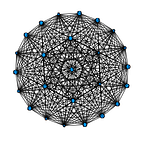Markowitz In A Recession
“I thought I was going to be a bum for the rest of my life” -Jean Michel Basquiat
Inflation, slump, economic downturn, bear market, bankruptcy, collapse: these are all synonyms for the dreaded “R” word. As much as we don’t like to think about it, our economy is to a degree cyclical. We can count on peaks and valleys to a certain extent and as they are always inevitable, we should prepare for each. One good way to invest for solid returns in the future is to not carry too many investments in one specific category be they stocks, bonds or funds. Diversification. But how much should we invest in each category to minimize our risk and maximize our return? How can we calculate the risk and expected return of our total investments?
Harry Markowitz really started modern portfolio theory in 1952 with his idea of how to model the risk and return of a portfolio of assets vs. modeling this for one specific asset and then combining the assets into one portfolio.
Expected Return:
Simply the expected return of a single asset is the sum of the rates of returns of said asset divided by the number of trading periods. The expected return is the average rate of return.
Covariance of Assets:
The covariance is the impact that each asset has on the total portfolio.
Objective:
As we see there are two objectives: minimize the risk while maximizing the returns. We are essentially minimizing the impact that a single asset has on the rest of the portfolio while achieving the highest expected return of the total portfolio.
In this algorithm the user is able to input the number of sample portfolio tests for their specific portfolio. Keeping this number smaller is usually better as a good understanding can be gained from a few thousand tests. The data are the closing prices of various stocks and funds etc. for the last five years:
This is not all that is needed for the min/max problem. Next the algorithm for a Pareto Frontier is shown which gathers all of the portfolios which are only best over others before or after it in one category. It is up to the investor which return that they desire or which level of risk that they are comfortable with. The algorithm also returns the Sharpe score of each portfolio. A Sharpe score is the ratio of the expected return of the portfolio of a risk free asset. This can be used to determine if a given portfolio is worth investing in. A negative Sharpe score signifies that the risk-free asset is a better investment than that specific portfolio. Just buy the bond. The closer to 1 that the ratio is the better the return of investment is. The algorithm is as follows:
Results:
We can see that the minimum return over thirty days is approximately 1.19% and the maximum return is 4.8%. Also minimum risk is .046 standard deviations away from the mean and the maximum risk is .11 standard deviations away from the mean. Let’s take a look at our graph of returns vs. Sharpe ratio:
At the time of writing this the risk-free return on a treasury bond is 3.33% which holds up to our graph of Sharpe ratios. The actual minimum risk that we can take is really 0 if the asset is truly risk free. As far as the portfolio goes as we are basically guaranteed a minimum return of 3.33% . With little risk we might as well as maximize our returns by taking on some risk. It better be worth it. The maximum return allocations are:
VYM is a Vanguard fund and SPY is the S & P 500. To achieve the maximum return the allocations are geared away from funds and indexes and instead allocated strongly towards individual stocks that don’t really pay dividends. This is more of an aggressive growth model in a bear market. Typically these stocks have fared better through a recession in the past.
In conclusion, this shows a typical Markowitz portfolio optimization. The risk and reward desired are up to the investor and hinges on the acceptable level of risk. Different portfolios carry different risk levels as well as different expected returns. Again past performances don’t guarantee future results but at least informed decisions can be made.
